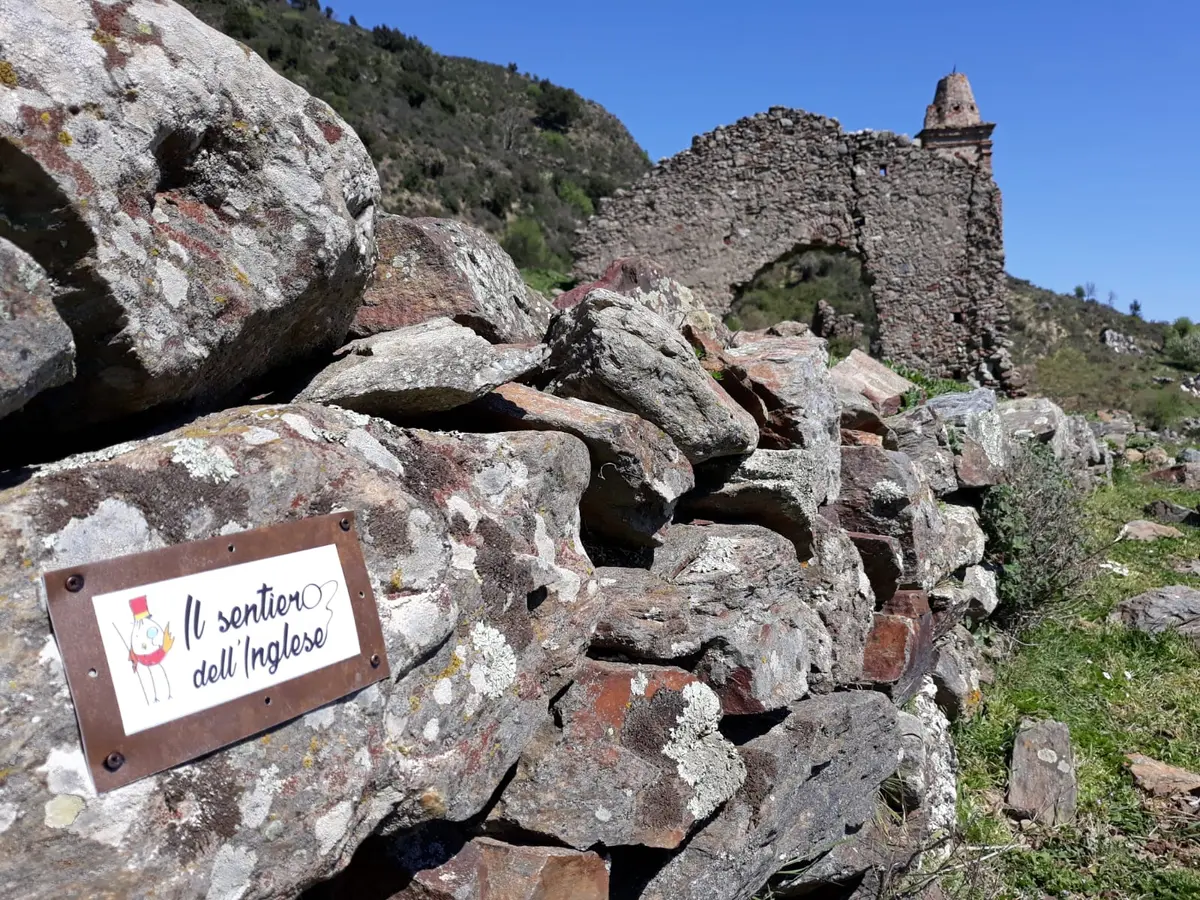The most beautiful churches in Calabria that are a must-see
Discover Calabria's masterpieces of sacred art

Cultural historian
Gerace - Regione Calabria
Travel information
Category
Cultural historian
Target
For all
Places of spirituality, but also of history, culture and art. Where faith and liturgy have endured through the centuries, preserved in silence by stones and bricks that continue to tell their story and renew the devotion of the faithful.
Calabria is a land rich in churches that are the roots of the territory on which they were built. In cities, along the coast, in the most remote villages of the hinterland, iconic or still unknown: there is a heritage of sacred buildings that deserves to be discovered.
Here are the most beautiful churches in Calabria that you absolutely must see.
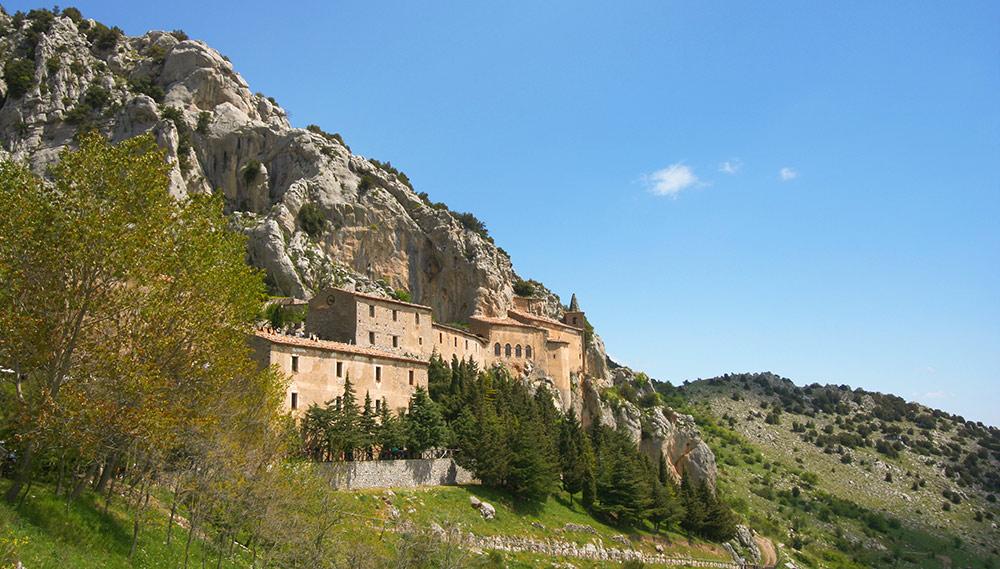
Shrine of Santa Maria delle Armi, Cerchiara di Calabria
Our itinerary among the most beautiful churches in Calabria begins in a small village nestled in the Pollino National Park, Cerchiara di Calabria. Here stands the spectacular Shrine of the Madonna delle Armi, a monumental complex of medieval origin set in the rock. A place of contemplation surrounded by nature, it is located on the slopes of Mount Sellaro, overlooking the Sibari plain and the Gulf of Taranto.
The origin of the Shrine – which stands on an ancient Byzantine monastic site – is closely linked to the ancient legend of the Sacred Stone. It is said that in 1450, some hunters from Rossano saw a doe enter a small cave on Mount Sellaro. They followed it in order to capture it, but once inside the cave, they found two wooden icons depicting the Holy Evangelists. Surprised, the hunters took the tablets and brought them to the village, but mysteriously, the icons disappeared and were found in the cave. The phenomenon was attributed to divine will, and for this reason it was decided to build a chapel to house and display the icons.
Once again, something extraordinary and inexplicable happened: during the work, a labourer broke an oval stone, which split in two. On one side appeared the image of the Madonna and Child and on the other, St John the Baptist. These incredible events have been handed down through popular devotion, between faith and legend. Part of the stone, the one with the image of the Madonna, is kept in a chapel embellished with polychrome marble inside the church.
The religious festival of Our Lady of Arms is on 25th April, when a procession takes place through the woods and then returns to the sanctuary. The interior of the church is also very impressive. Among other things, the 18th-century high altar and the frescoes depicting the Madonna and several saints are certainly worth admiring.

Cathedral of Santa Maria Assunta, Cosenza
We continue our journey to discover the most beautiful churches in Calabria, stopping in the historic centre of Cosenza. The Cathedral, dedicated to Santa Maria Assunta, is one of the oldest religious buildings in Calabria. It was inaugurated in 1222 in the presence of Emperor Frederick II, who on that occasion gave the city the precious Stauroteca (said to contain a fragment of the cross of Christ), now kept in the nearby Diocesan Museum.
The Cathedral, nestled in the heart of the old town, a few steps from the historic Rendano Theatre, is one of Calabria's UNESCO World Heritage Sites. It is accessed from the square via a staircase and has a tripartite façade (corresponding to the division of the naves inside) with three portals, the central one surmounted by an impressive rose window. The interior of the cathedral deserves a long and thorough visit in order to admire all its spaces. From the Baroque side chapels to the polychrome frescoes, from the mausoleum of Isabella of Aragon to the sarcophagus of Meleager. On the neo-Romanesque altar there is a 15th-century wooden crucifix. But perhaps what intrigues and fascinates most of all is the icon dedicated to the Madonna del Pilerio, protector of the city.
Popular devotion attributes miraculous episodes to this painting: the dark spots on the Virgin's face are said to have appeared at the end of the plague in 1576. According to the faithful, it was Our Lady of Pilerio who saved Cosenza from the epidemic.

Cattolica of Stilo
This church will surprise you with its architecture and location. The Cattolica of Stilo is the symbol of Byzantine Calabria and is literally set on a rocky spur at the foot of Mount Consolino. The view is striking due to the beauty of its typically Byzantine forms and the natural setting in which the church is located.
It is believed to have been founded between the end of the 10th and the beginning of the 11th century and, in line with the Byzantine model, has a Greek cross plan inscribed in a square with three apses. It consists of five cylindrical structures surmounted by domes, with the drum of the central dome supported by four columns. It is believed that the Eastern monks who lived here, on the slopes of Mount Consolino, built the sacred building, which is now on the list of candidates for UNESCO World Heritage status.
The exterior is simple and bare, in contrast to the marvellous interior, which in the past must have been entirely covered with colourful frescoes (only a part of which has been recovered). You can admire the image of the sleeping Madonna, the Ascension with Christ blessing, depicted inside a mandorla carried in flight by four angels, and the presentation of Jesus at the temple.
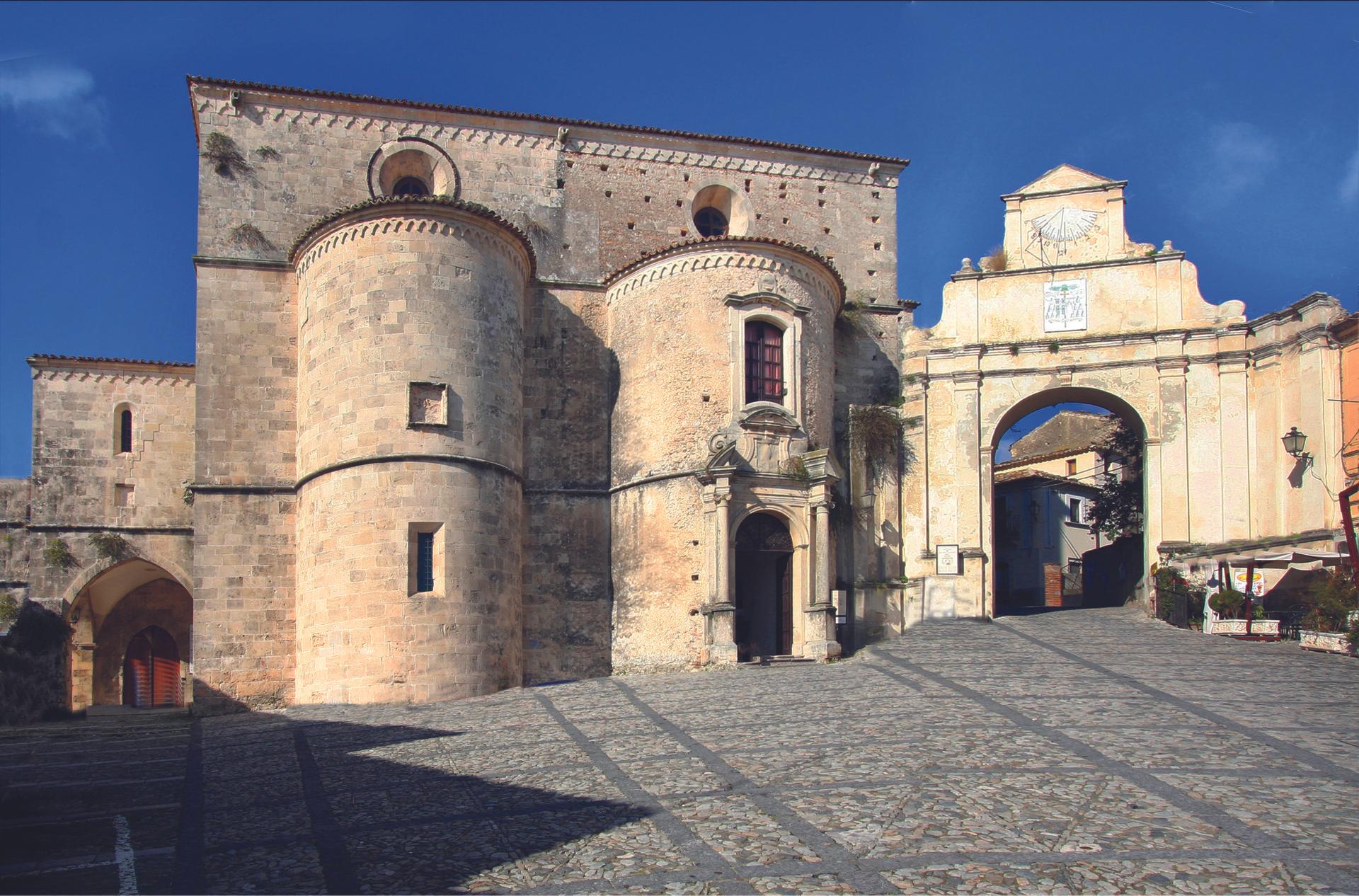
Cathedral of Gerace
Let's stay in the province of Reggio Calabria because Gerace, one of Italy's most beautiful villages, is truly an enchanted place full of charm. Here you can admire Calabria's largest Cathedral, covering 1,700 square metres.
Of Norman origin with Gothic elements and dating back to 1100, this cathedral has been declared an Architectural Asset of National Interest and is so imposing and massive that it looks like a castle. On the limestone wall at the entrance, there is a large wooden portal with concentric arches. The interior of the naves is spectacular with its twenty granite and marble columns topped with finely carved capitals.
And there is still much to see, because the Cathedral houses a wonderful crypt. Here, supporting the vault, are another twenty-six columns from imperial-era villas or perhaps from an ancient temple. You can admire 17th-century Gerace majolica tiles and marble decorations. The Chapel of St Joseph houses the Diocesan Museum where, among other things, there is a stauroteca in gilded silver, semi-precious stones and beads, probably made in Sicilian Norman workshops in the 12th century; a large 19th-century monstrance in gilded silver decorated with semi-precious stones; and a filigree chalice dated 1726 and made by Sicilian silversmiths.
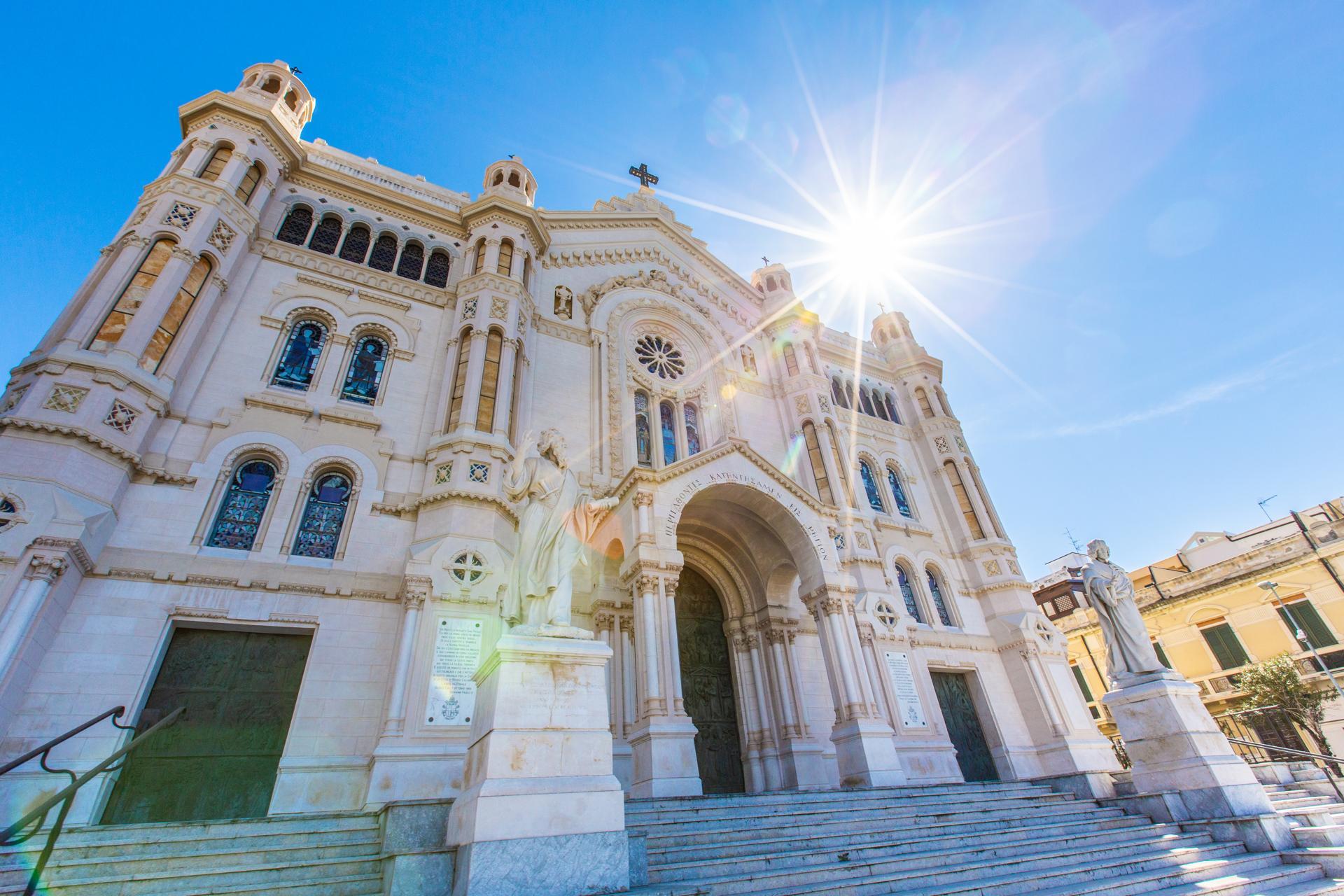
Cathedral of Reggio Calabria
Let's move on to the city on the Strait, with its wonderful seafront described by D'Annunzio as "the most beautiful kilometre in Italy". The Cathedral of Reggio Calabria, elevated to the status of minor basilica by Pope Paul VI in 1978, is the mother church of the Archdiocese dedicated to Maria Santissima Assunta. After the earthquake of 1908, it was rebuilt in neo-Romanesque style.
On the façade, divided into three sections by four turrets, you can admire three splendid bronze portals. The interior is surprisingly bright thanks to the large polychrome stained glass windows decorated with figurative or geometric-ornamental motifs. The Cathedral has an imposing layout with three naves divided by rows of marble columns with bell-shaped bases. The presbytery is dominated by a large wooden crucifix.
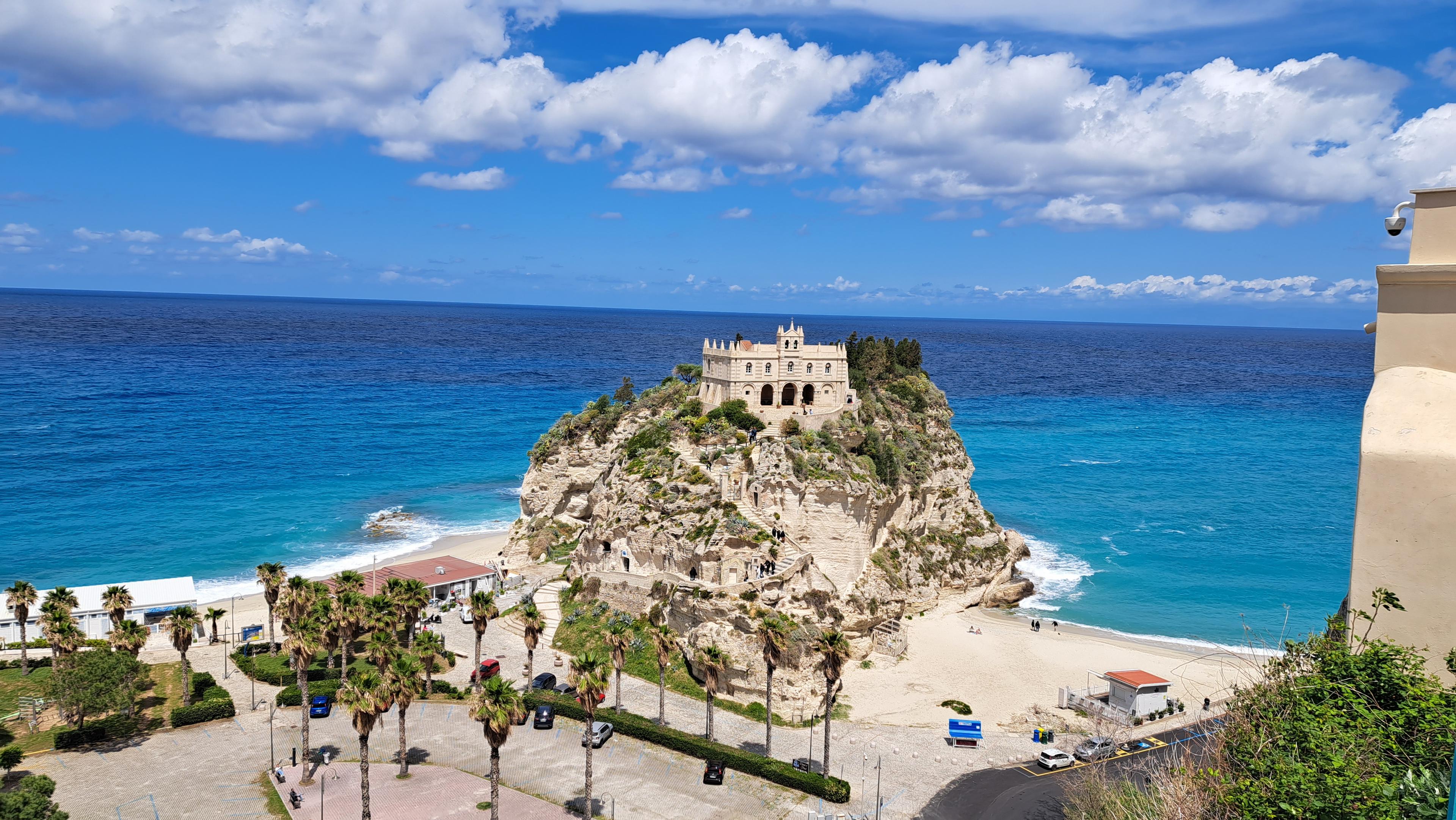
Shrine of Santa Maria dell'Isola, Tropea
The symbolic image of Tropea is the Shrine of Santa Maria dell'Isola and, in the background, the unmistakable turquoise sea. A must-see for anyone visiting the famous village, photographed from every angle to show it in all its splendour. This iconic Calabrian tourist attraction is striking from the outset due to its location, as the church stands on top of a sandstone rock overlooking the sea.
The place of worship is mentioned in documents dating back to Popes Alexander III (1159-1181) and Honorius III (1216-1227), but its first construction is much older. It was most likely built during the Byzantine era, between the sixth and ninth centuries. It was first inhabited by Basilian monks and then by Benedictines. It has been damaged several times by violent earthquakes and subsequently remodelled. There is a story surrounding this church that has been amplified by popular devotion. According to tradition, the original wooden statue of the Virgin Mary was placed in a niche inside the cave, having arrived in Tropea from the East on board a ship.
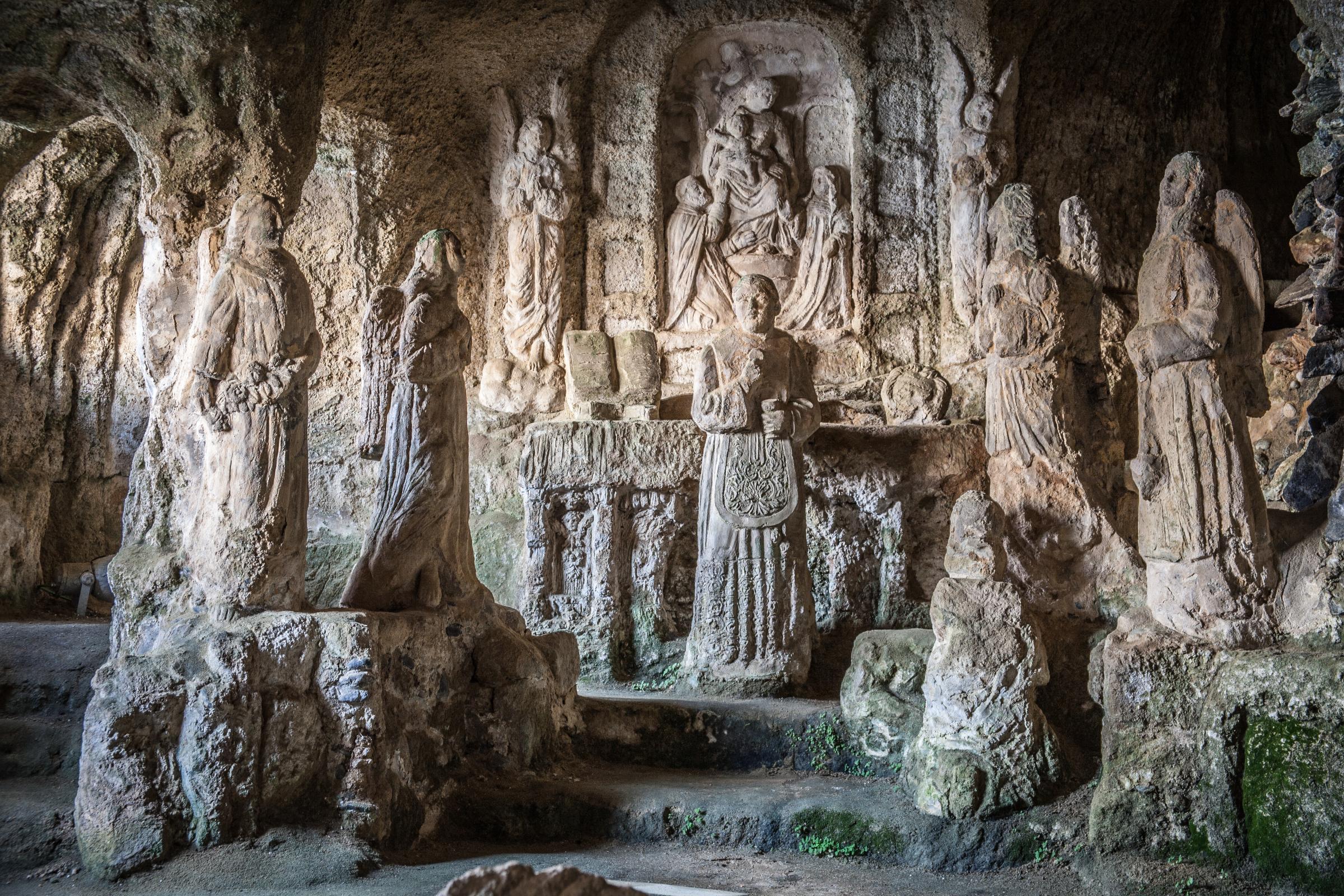
Church of Piedigrotta, Pizzo
Among the most beautiful churches in Calabria that you absolutely must see, there is one that will amaze you with its unique features. The small Church of Piedigrotta in Pizzo is located near the beach, carved into a cave and containing dozens of sculptures.
If you want to enjoy a truly evocative experience, we recommend visiting the Church of Piedigrotta in the afternoon, when the sun's rays penetrate deep into the caves, highlighting the colours of the mineral salts on the walls and illuminating the outlines of the statues. This church is also linked to a miraculous event involving a painting of Maria Santissima di Piedigrotta dating back to 1600. The story tells of a sailing ship navigating the stormy waters of the Gulf of Sant'Eufemia. The sailors on board prayed to the Madonna, whose painting was in the captain's cabin, promising that if they were saved, they would have a votive chapel built. The sailing ship managed to return to land and, after further vicissitudes, the promise was kept. Today, a painting in the central nave of the church depicts a sailing ship in stormy seas in memory of that episode.
Between the late 1800s and early 1900s, Angelo Barone, a local artist fascinated by the fishermen's stories, enlarged the cave and spent years creating tuff sculptures that were placed inside. His son, Alfonso Barone, wanted to continue his father's work and further enlarged the church, creating other statues, capitals and bas-reliefs. This brings us to relatively recent times: in 1969, the sculptor Giorgio Barone, Alfonso's son, returned from Canada, where he had emigrated, and restored the statues and carved two medallions depicting Pope John XXIII and John Kennedy, completing the work begun by his grandfather.
